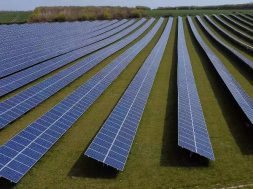
Local content requirement is not the right approach for India: Trina Solar
India’s aggressive target for solar power generation has attracted developers, manufacturers and several stakeholders. One such name is New York Stock Exchange-listed solar equipment manufacturer Trina Solar. The company is in the process of setting up a $500-million plant in Andhra Pradesh with an annual capacity of 350 MW of solar power modules. The company had global revenues of $3 billion in 2015 and has shipped over 17,000 MW of equipment worldwide since 2007. The company’s Asia Pacific and Middle East President Helena Li told BusinessLine in an interview that it had to rework its numbers to bring down its cost of manufacturing to align it with the new tariffs of solar power. Excerpts:
What is the status of the Andhra Pradesh manufacturing plant and what are the challenges that you are facing in making it viable?
We have done the ground-breaking already and we have the memorandum of understanding ready. We are now trying to work out a detailed plan and are working on numbers basically.
Our budget, which was calculated when we conceived the project, doesn’t work, so we have to work out how to cut the costs in a factory that isn’t even built yet.
The key challenge to bring down the cost of manufacturing is the lack of supply chain which means you cannot source the raw material as cheap as you can do in China. China is still very competitive in solar panel manufacturing costs. Since the entire supply chain is set up in China, economies of scale exist which bring down cost. It is not just India but most of the countries face this challenge.
How soon do you think the panels that you manufacture in India will be competitive with those that you make in China?
I think if it is done by a Chinese company like us who already have a huge supply chain set up, have a market and technology it should take 2-3 years to match the cost of solar panels made in China. This can be done if the ecosystem is set up which is likely to happen since if we come here our suppliers will also eventually come here. For Indian companies, it might be tougher to reach the cost competitiveness of Chinese products.
As a foreign manufacturer, what do you make of the domestic content requirement for certain solar power projects?
For us, we look at the free trade spirit of the whole world and we do not believe in domestic content requirement because we are in an era of globalisation.
India is putting domestic content requirement to build the industry. Such measures are understandable for a small market but when you are talking of 100,000 MW, even without the domestic content requirement manufacturers will set up plants in India to reduce the time to serve the customer and the market. China protects domestic manufacturers, gives tax breaks, low-cost loans to help them.
On the other side, we are planning to set up manufacturing here, but our challenge is how to make it economically viable. From this side, I hope the government can help us in the ramp up years. However, broadly, I don’t think domestic content requirement is the right approach. It is not a long-term sustainable move.
In terms of sales volumes where have you reached so far and what is the target?
We are probably 1,200 MW on a cumulative basis and by the end of this year we should be at 2,000 MW.
Overall, this year Trina Solar is looking at a 10 per cent market share globally so that would be around 6,000 MW. For a major market, we always hope we can have more than 10 per cent market share. In India we have around 15 per cent market share and in some years it has been more. If we could maintain that then we are happy.
















